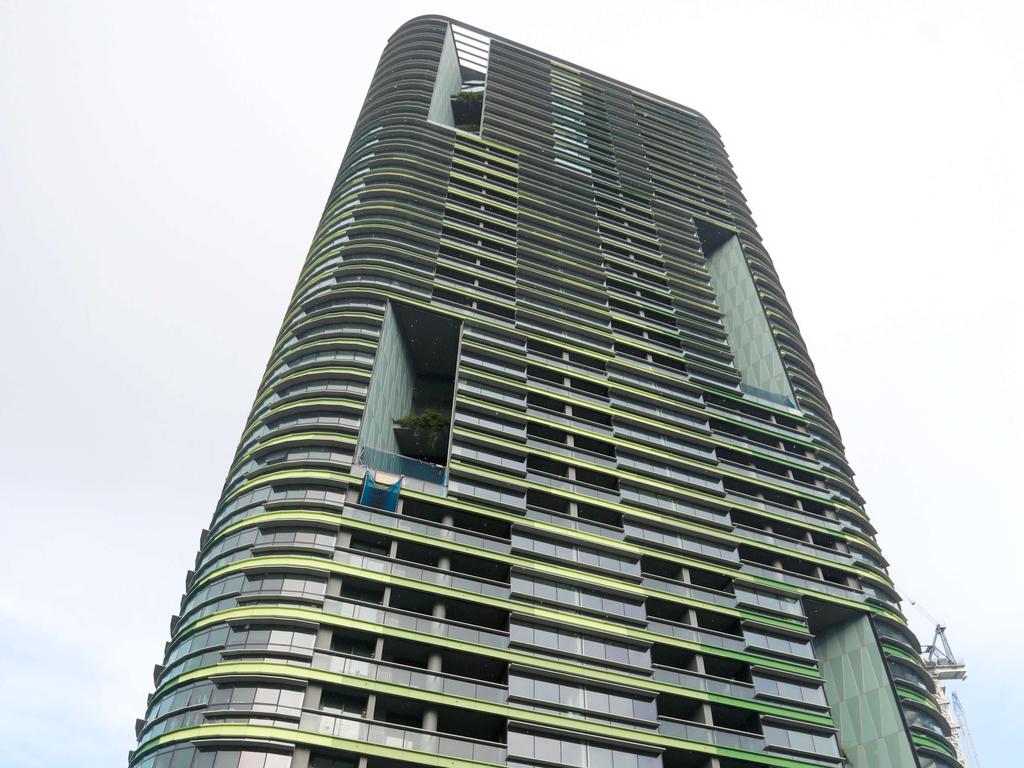No Australian insurer will touch cracked apartments, inquiry told
Buyers have better protection buying a $1000 TV than a million-dollar apartment, inquiry hears.

Owners forced to evacuate the Opal Tower apartment complex in Sydney’s west because of building cracks have been forced to look “offshore” for insurance and faced a “tenfold” rise in premiums because no Australian firm will provide coverage.
Karl Sullivan, head of risk and operations for the Insurance Council of Australia, revealed the grim picture for the owners of 172 apartments at the Homebush building who were told on Christmas Eve that all residents must leave.
The revelation came on the first day of a NSW parliamentary inquiry into building quality, standards and disputes across New South Wales, as one of another cracked apartment block, Mascot Towers, broke down as he detailed the “trauma” his family has experienced since being evacuated from the cracked Sydney apartment block.
Grim insurance picture
As he gave his evidence, Mr Sullivan said local insurers had assessed the risk for Opal Tower and other apartments found to have structural damage or defective materials such as combustible cladding.
Asked about the prospects of Mascot Towers owners gaining insurance after that building in Sydney’s south was also found to have structural damage and evacuated in June, Mr Sullivan said he was more familiar with the situation at Opal Tower.
He said he was aware that no Australian insurer was prepared to offer coverage to Opal Tower owners. Those wanting coverage were forced to “go offshore” and pay annual premiums that were “tenfold increases” on previous years.
Restrictions applying on what was covered, Mr Sullivan said, and in many cases insurers were willing to provide cover for fire damage only.
Asked further about Mascot Towers, and told by committee chairman David Shoebridge that its owners faced four tranches of remedial work for structural damage with the first costing about $10 million, the Insurance Council chief said owners would find “far less choice in the market”.
No register, no cladding insurance
He said insurers could not provide coverage for buildings found to have defective cladding because the extent of the problem in Australia was not yet known, despite efforts by state governments and councils to create a register.
It was still not known which properties found with potentially flammable cladding fitted into categories of low, medium and high risk — and which ones would need replacement.
The first day of an inquiry sparked by concerns about building standards in the state also today heard the accounts of several Mascot Tower resident owners.
Owners Vijay Vital and Alton Chen gave emotional accounts, saying they did necessary checks when buying their properties, yet now faced having to pay the enormous costs of damage for which they were not responsible.
The period of seven years for which developers remained responsible had lapsed, and the developer had “disappeared”.
‘When can I go home?’
Mr Vital wiped away tears as he told the inquiry the situation had devastated his family.
“I stand here as a parent … my daughter asked me ‘When can I go home?’” Mr Vital said.
Mascot Towers has high strata fees compared to neighbouring buildings and had been plagued by defects due to substandard materials and negligence, he alleged. “This has caused a lot of trauma in the past two months because we were evacuated, the reason for which we don’t know,” he said.
“We have insurance but we can’t claim any of it until we know the root cause.”
Residents of the Mascot complex’s 132 apartments have been forced to stay elsewhere since the building was evacuated in mid-June due to cracking in the primary support structure and facade masonry.
The Mascot Towers Owners Corporation — in a submission to the inquiry — said owners and residents relied on the “system” but the NSW government had failed to establish a sufficiently tough regulatory framework for builders, certifiers and property developers.
There’d been a failure of the private building certification process, a lack of supervision over builders and an unfair burden on owners to rectify defects. As a result, the responsibility for repair costs should fall to the government, the owners corporation said.
“Buyers have more consumer protection buying a $1000 television than a million-dollar apartment.”
The submission outlined Mascot Towers’ various defects leading up to the cracking problem, including “lukewarm” water all year round, severe stormwater flooding and the incorrect use of electrical cables.
The building was passed for occupation despite these faults, it said. “Our residents have inherited a building with numerous defects … which were originally signed off on by our government, engineers and certifiers as ‘within standards’.
“Somewhere along the line, maximising profit has become a misinterpretation for ‘delivering quality’.” The group recommended the NSW government fund repairs to Mascot Towers as the defects “happened under the watch of government”.
Mandatory supervision of private certifiers was also recommended. “The buck stops with the government. When it goes wrong, they need to put money back in to fix a system they’ve overseen,” the submission states. David Chandler, appointed this month as the inaugural NSW building commissioner, will start in his new role later this week.
— with AAP





To join the conversation, please log in. Don't have an account? Register
Join the conversation, you are commenting as Logout